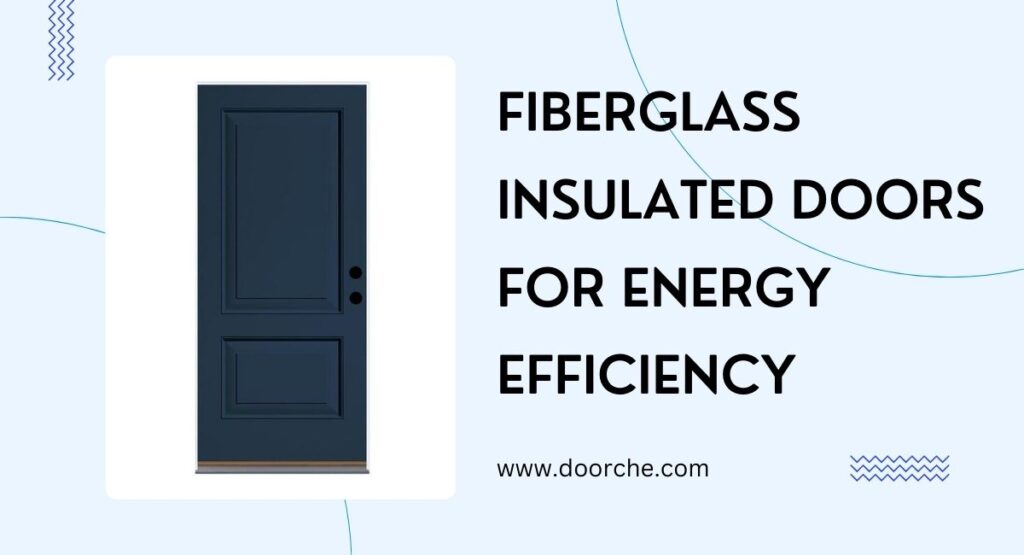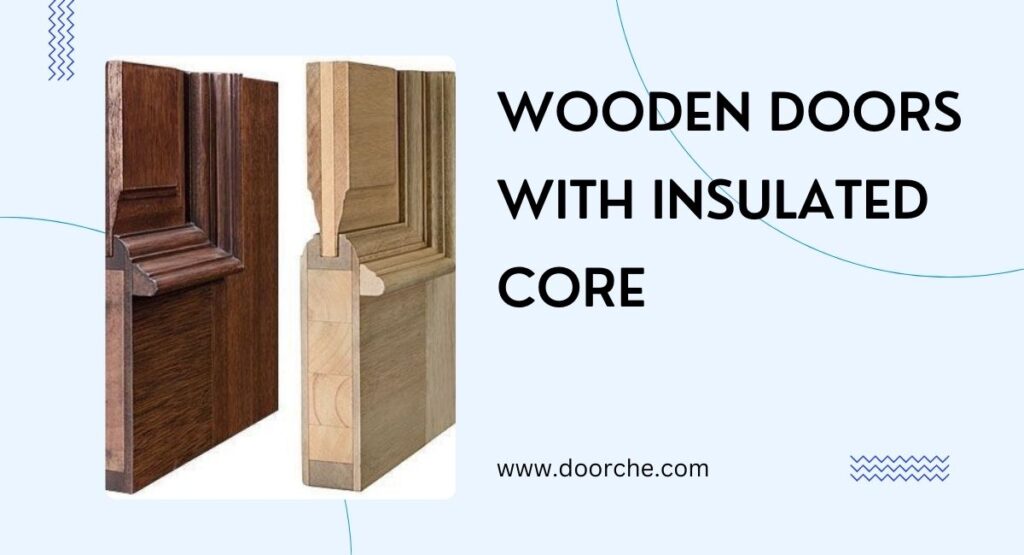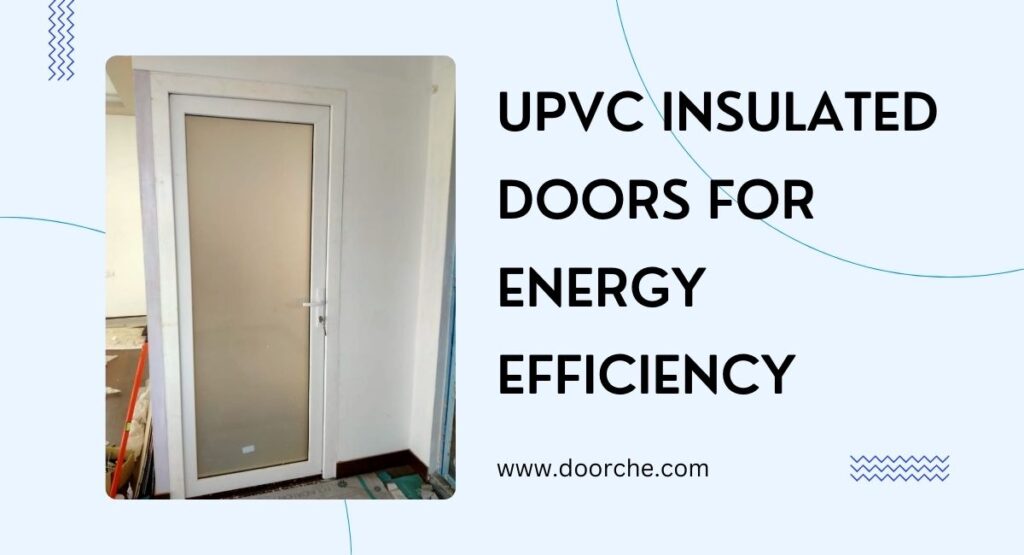Energy efficiency is becoming an essential consideration in modern buildings, and one of the most effective ways to reduce energy consumption is by installing insulated doors. These doors play a crucial role in maintaining the internal temperature of buildings, reducing the need for heating and cooling, and lowering energy bills. In this article, we’ll explore the top insulated doors available, their materials, and how to choose the best option for your building.
The Role of Insulated Doors in Energy Efficiency
Doors are one of the main points where energy loss can occur in a building. Poorly insulated doors can lead to significant heat loss in winter and unwanted heat gain in summer. Insulated doors are designed to minimize these energy leaks by creating a thermal barrier between the interior and exterior environments. By investing in a quality insulated door, you can ensure a more comfortable indoor environment and save significantly on energy costs.
Types of Insulated Doors
Different materials and designs can greatly affect the insulation properties of doors. Each type of door offers unique benefits, depending on the specific needs of the building and the climate in which it is located.
1- Fiberglass Doors: Lightweight and Durable
Fiberglass doors are becoming increasingly popular due to their light weight and high durability. They offer excellent thermal insulation, making them ideal for homes in regions with extreme weather conditions. Fiberglass is naturally resistant to moisture and temperature changes, which makes it one of the most energy-efficient materials for doors.

Advantages:
- Fiberglass doors require very little maintenance compared to other materials like wood.
- They are resistant to warping, rot, and corrosion.
Disadvantages:
- Fiberglass doors may come with a higher upfront cost, but their long lifespan makes them worth investment.
2- Steel Doors with Foam Core: Strength and Insulation
Steel doors are known for their strength and durability, but when combined with a foam core, they become highly energy-efficient. The foam core acts as an insulator, reducing heat transfer through the door. These doors are commonly used in both residential and commercial buildings due to their ability to withstand extreme conditions while maintaining excellent insulation.

Advantages:
- Steel doors provide extra security and fire resistance.
- They are highly durable and can endure harsh weather conditions.
Disadvantages:
- Steel doors may require occasional maintenance to prevent rust, especially in humid environments.
Wooden Doors with Insulated Core: Aesthetic Appeal with Practical Benefits
Wooden doors, particularly those with an insulated core, offer a combination of beauty and functionality. These doors provide good insulation properties while maintaining the natural, warm appearance of wood, making them a popular choice for traditional homes and buildings.

Advantages:
- Wooden doors are aesthetically pleasing and can enhance the overall design of a building.
- With the right insulation, they can perform well in conserving energy.
Disadvantages:
- Wood requires more maintenance, especially in areas prone to moisture, to avoid swelling or rot.
uPVC Doors: Affordable and Efficient
uPVC (unplasticized polyvinyl chloride) doors are one of the most cost-effective options for insulated doors. They are widely used due to their affordability and energy efficiency. These doors are also resistant to weathering and require minimal maintenance, making them ideal for both residential and commercial applications.

Advantages:
- uPVC doors are highly resistant to moisture and corrosion.
- They provide excellent thermal and sound insulation.
Disadvantages:
- uPVC doors can become brittle and discolored over time, particularly in extreme temperatures.
Key Factors to Consider When Choosing Insulated Doors
When selecting the best insulated door for energy efficiency, there are several factors to keep in mind:
U-Value: The U-value measures the rate of heat transfer through the door. A lower U-value indicates better insulation performance. Look for doors with a low U-value to ensure maximum energy savings.
Weather Resistance: Depending on the climate in your area, you may need a door that can withstand high winds, rain, or snow. Materials like fiberglass and uPVC are great for areas with harsh weather conditions.
Sound Insulation: In addition to thermal insulation, some doors provide soundproofing benefits. This can be especially important if you live in a noisy area.
Durability and Maintenance: Consider the long-term maintenance requirements of the door. Materials like steel and fiberglass tend to require less upkeep compared to wood, which may need regular sealing or painting to prevent damage.
Tips for Optimizing Energy Efficiency with Insulated Doors
Even the best-insulated door won’t perform well if it’s not installed properly. Here are a few additional tips to ensure optimal energy efficiency:
- Proper Installation: Make sure your door is installed by a professional to avoid any gaps or misalignments that could lead to air leaks.
- Weatherstripping: Use high-quality weatherstripping around the door frame to seal any potential gaps and prevent drafts.
- Regular Maintenance: Inspect the door regularly for any signs of wear and tear, and address issues such as worn-out weatherstripping or damaged seals promptly.
Conclusion
Investing in insulated doors is one of the most effective ways to enhance energy efficiency in your home or business. By understanding the different types of doors available, including fiberglass, steel, wood, and uPVC, you can choose the best option for your specific needs. Remember to consider factors such as U-value, weather resistance, and maintenance requirements when making your selection.
Ultimately, insulated doors not only help you save on energy costs but also contribute to a more comfortable and environmentally friendly living or working space. For the best results, make sure to combine high-quality doors with proper installation and regular maintenance.
